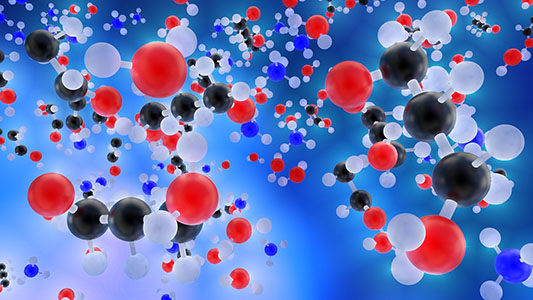6 | Summary
Summary
- A chemical subunit is the smallest building block of a pure substance that is unique to that substance.
- Atoms are the simplest type of chemical subunit.
- Atoms can exist individually or connected to other atoms by chemical bonds.
- Molecules are discrete arrangements of atoms joined by chemical bonds.
- Lattices are networks of atoms joined by chemical bonds.
- Pure substances are made up of one type of chemical subunit.
- They have defined physical and chemical properties.
- Elements are pure substances made up of one type of atom.
- These atoms may exist individually, or as molecules or lattices.
- Elements cannot be broken down into simpler substances.
- Compounds are pure substances made up of two or more different types of atoms.
- These structures may be molecules or lattices.
- Compounds can be broken down (chemically) into simpler substances.
- Atoms are made up of three main subatomic particles – protons, neutrons and electrons.
- Protons and neutrons form a cluster at the centre of the atom, called the nucleus.
- Electrons orbit the nucleus, in electron shells, forming an electron cloud.
- Protons have a mass of 1 atomic mass unit and a positive charge (+1).
- Neutrons have a mass of 1 atomic mass unit and no charge.
- Electrons have a mass of 1/1840 of an atomic mass unit and a negative charge (–1).
- Atoms that have the same number of protons but a different number of neutrons are called isotopes.
- The atomic number of an atom is equal to the number of protons in the atom.
- It determines the type of atom.
- The mass number of an atom is equal to the total number of protons and neutrons in the atom.
- This is the number of particles in the nucleus, which largely determines the mass of an atom.
- Electron configuration describes the arrangement of electrons in shells around the nucleus of an atom.
- A maximum of 2 electrons can occupy the first shell.
- A maximum of 8 electrons can occupy the second shell.
- A maximum of 18 electrons can occupy the third shell, but the fourth shell will begin to fill once the third shell contains 8 electrons.
- A maximum of 8 electrons can occupy the valence shell (outermost shell).

(Image: MasterTux, Pixabay)

